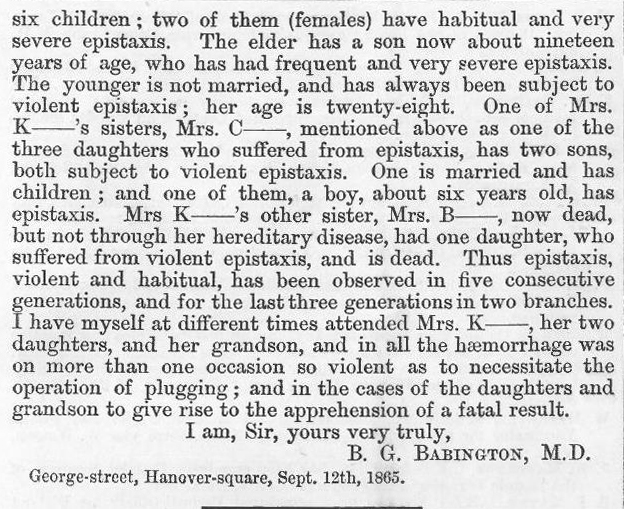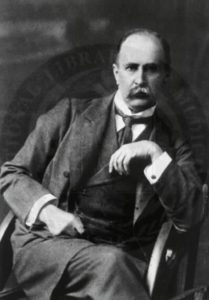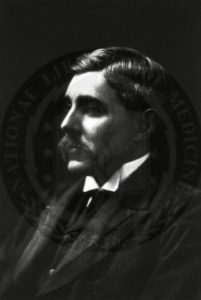The History of HHT
First described in 1865...
by B.G. Babington, MD in The Lancet medical journal, it was many years before this disorder was officially recognized.


Citation: Babington BG. Hereditary epistaxis. The Lancet. 1865;86(2195):362-363. DOI 10.1016/S0140-6736(02)55197-7
HHT was originally known as Osler-Weber-Rendu after three scientists who described
the disorder in the late 19th and early 20th centuries. The term is still used today.
Osler, Weber, and Rendu

Sir William Osler M.D. (1849-1919) was a Canadian physician, the first Professor of Medicine at Johns Hopkins, and one of the founders of Johns Hopkins Hospital. He differentiated HHT from hemophilia because the patients did not bleed profusely from lacerations, an important distinction that identifies HHT as a single entity (not part of hemophilia). Osler described two new familial cases of HHT, initially establishing that this disorder is passed down through generations.
 Dr. Frederick Parkes Weber, M.D. (1863 - 1962), followed in his fathers footsteps, earning his medical degree at Cambridge in 1892. He was instrumental in describing Sturge - Weber Syndrome and Weber - Cockayne Syndrome. By the time of his death he had written over 1,200 medical articles.
Dr. Frederick Parkes Weber, M.D. (1863 - 1962), followed in his fathers footsteps, earning his medical degree at Cambridge in 1892. He was instrumental in describing Sturge - Weber Syndrome and Weber - Cockayne Syndrome. By the time of his death he had written over 1,200 medical articles.
 Henri Jules Louis Marie Rendu (1844-1902) was a French physician. Rendu observed the skin and mucosal lesions and in 1896 distinguished HHT as a disorder separate from hemophilia.
Henri Jules Louis Marie Rendu (1844-1902) was a French physician. Rendu observed the skin and mucosal lesions and in 1896 distinguished HHT as a disorder separate from hemophilia.
